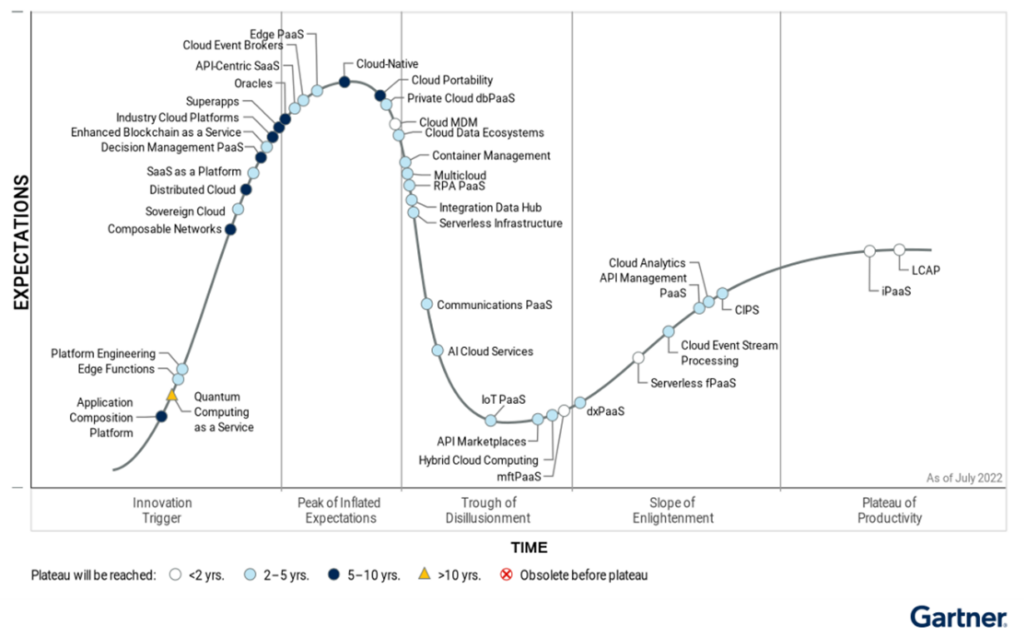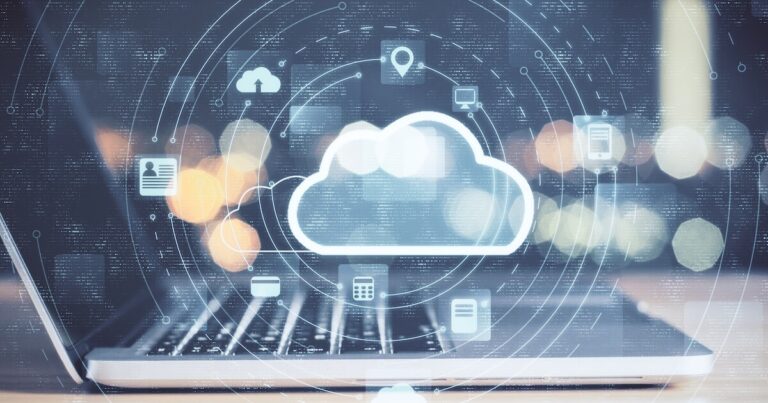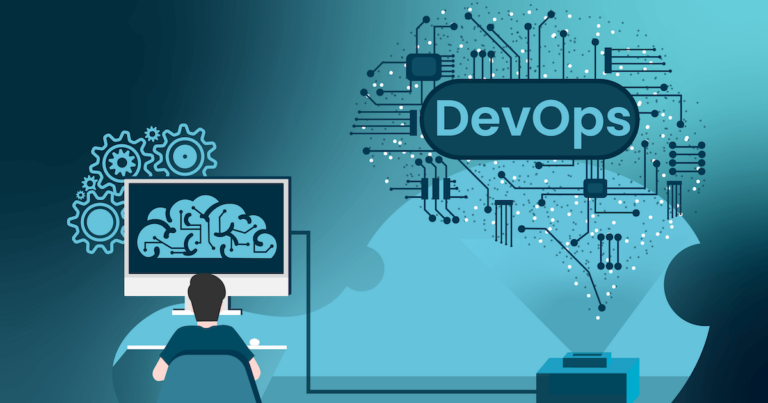Gartner predicts that the two cloud technologies are expected to play an important role in enterprise data and integration in less than two years. In the Hype Cycle Cloud Platform Services 2022 report, Gartner found that integrated platform-as-a-service (iPaaS) and low-code application platforms (LCAP) will climb the plateau of productivity in the next two years. A large number of organizations are witnessing a reduced level of risks and a rapid growing phase of adoption of two technologies (see Figure), along with the real-world benefits that are demonstrated and accepted worldwide.
Increase in the adoption of iPaaS
It is obvious that cloud integration is one of the main challenges organizations are facing today. To meet customer demands, stay ahead of the competitors and increase agility, organizations are investing heavily in cloud integration solutions such as multi or hybrid cloud deployment as well as reducing levels of risk in their IT infrastructure.
Integration platform as a service (iPaaS) is attracting all types of organizations, including large, midsize, and small organizations, with its ease of access, versatility, and low initial cost. Organizations have chosen iPaaS to support rapid integration and automation of SaaS applications with other SaaS and on-premise applications and data sources.
Yefim Natis – VP analyst at Gartner, said that iPaaS has moved to early mainstream adoption globally, reaching 20% to 50% of the global target audience who will use iPaaS offerings to integrate not only application and data but also ecosystems, APIs, and business processes.
Organizations need to enhance their integrated approach through an iPaaS to incorporate applications with data and services for a hybrid ecosystem of cloud and on-premises and ever-changing customer preference demands. An iPaaS enables users to develop, deploy, execute and govern applications without using extra hardware or software. Monitoring can also be used to check the status of applications. Some data integration tools and platforms such as API management platforms, ESBs, B2B gateways, and managed file transfer products support interoperability between master data tools, data governance & data quality solutions. With this approach, they can get various benefits such as improving operational efficiency, customer experience, support & increasing competitiveness, flexibility, scalability and reducing operational costs.
Worldwide iPaas end-user spending is expected to be a total of $5.6 billion in 2022, up 18.5% from 2021, and Global public cloud services spending is expected to be a total of $498 billion in 2022, an increase of 21% year-over-year. Here is the graphical representation of cloud technologies in Gartner’s hype cycle.

Figure: Hype cycle for cloud platform services, 2022
The Second Highlighted Technology
The low code application platform is also enjoying an increase in Hype cycle for cloud platform services. Enterprises leveraging it for seamless cloud automation and integration want to be agile and adaptable globally. According to Gartner, hyper automation functionality will be the dominant competitive differentiator among low-code development tools by 2024.
As there are increasingly changes in business processes, LCAPs support initiatives such as digitizing records and automation for increased business efficiency and cost-savings. In the context of the increasing demand for fast business change, “LCAPs provide organizations an opportunity for accelerated digital innovation,” said Natis.
Gartner analysts say that the LCAP revenue market will be a total of $7.4 billion in 2022, an increase of 28.4% year over year. It has moved to mainstream maturity globally, reaching more than 50% of the global target audience.
The pace of running business applications is increasing at an unprecedented rate. For creating state-of-the-art products, it takes adhoc requests from various internal teams and IT departments. As a result, there are manual processes, various requests, and disjointed data available in the system. LCAP reduces costs and develops rapid applications while automating manual processes and integrating disjointed data. Through LCAP, organizations with limited IT resources can create state-of-the-art products, and their developers can create, deploy and deliver products with minimal coding skills. For transparency, business users can make front or backend data visible to all employees by creating custom applications and reports.
Source – https://www.gartner.com/en/newsroom/press-releases/2022-08-04-cloud-platform-hc-press-release




